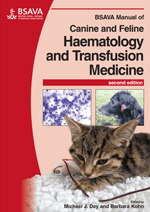
Full text loading...

The platelet disorders encountered most commonly in veterinary practice are quantitative abnormalities, particularly thrombocytopenia. Abnormalities in platelet function have been documented in domestic animals and result in abnormal bleeding in affected individuals. This chapter looks at platelet structure; platelet function; diagnosis of thrombopathias; defects in platelet function; management.
Disorders of platelet function, Page 1 of 1
< Previous page | Next page > /docserver/preview/fulltext/10.22233/9781905319732/9781905319732.24-1.gif

Full text loading...




